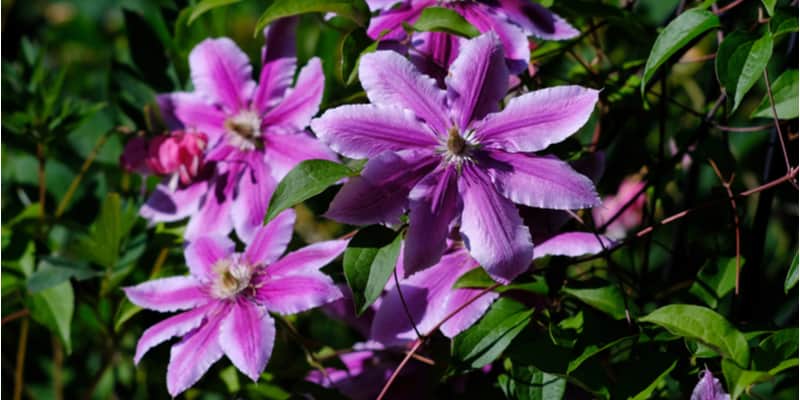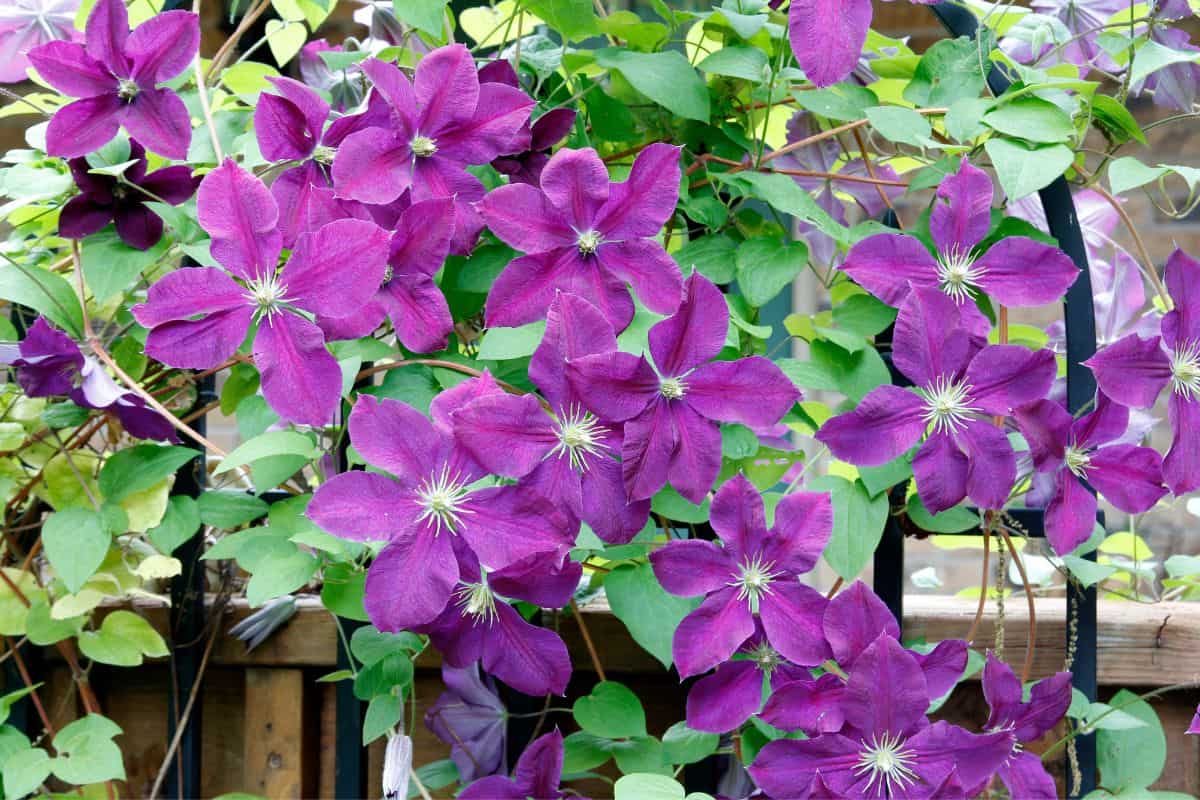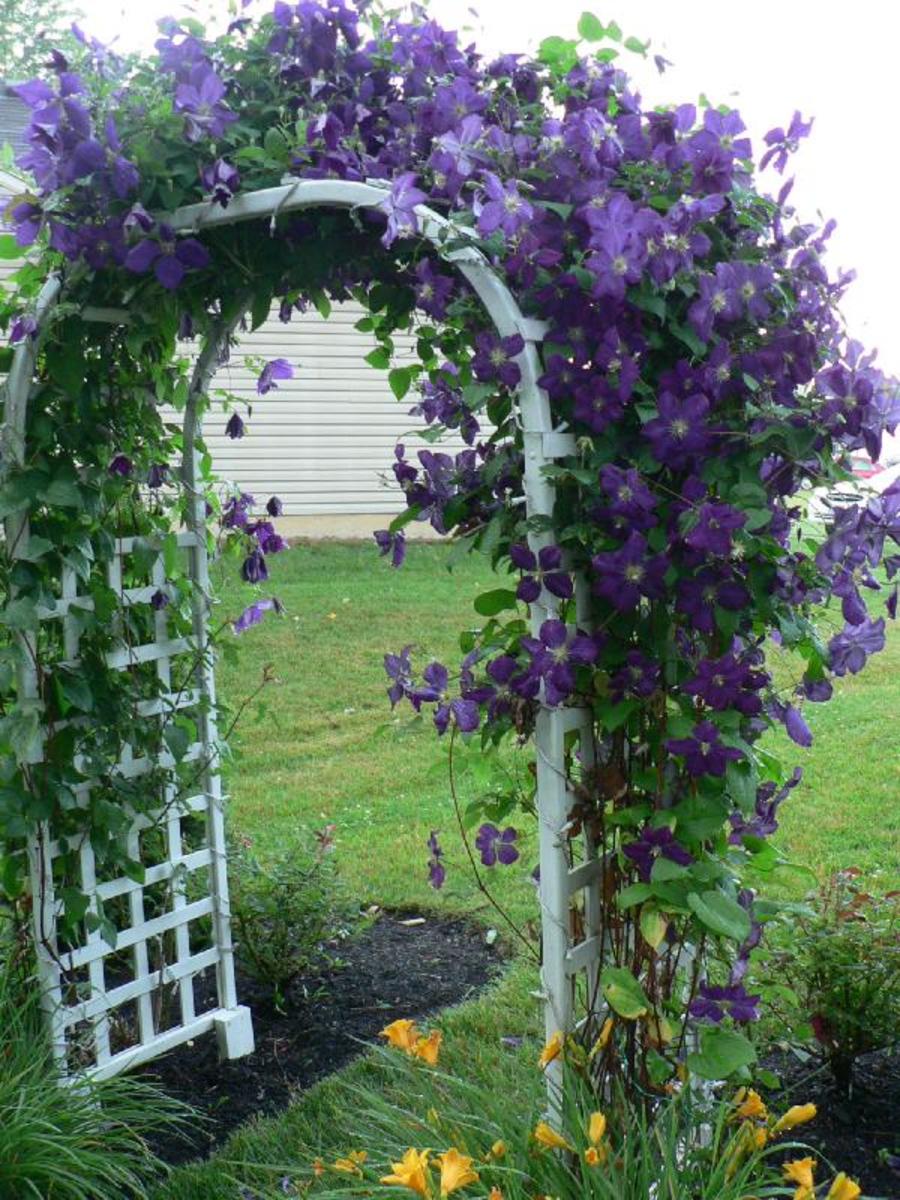Understanding Shade Tolerant Clematis: What to Look for in a Variety
When it comes to selecting clematis for shaded areas in Zone 5, it’s essential to choose varieties that are tolerant of low-light conditions. While clematis are often associated with sunny gardens, many varieties can thrive in shade, providing a burst of color and vibrancy to even the most shaded areas.
In Zone 5, the sun can be intense during the summer months, making it crucial to select clematis varieties that can handle the heat and shade. Shade-tolerant clematis are characterized by their ability to thrive in low-light conditions, often producing more delicate blooms that are less prone to fading.
Some popular shade-tolerant clematis varieties for Zone 5 include ‘Crystal Fountain’ and ‘Betty Corning’. These varieties are known for their ability to produce an abundance of blooms in shaded conditions, making them an excellent choice for gardeners looking to add some color to their shaded gardens.
When selecting a shade-tolerant clematis variety, look for plants with smaller, more delicate blooms. These varieties tend to perform better in low-light conditions and are less prone to fading. Additionally, consider varieties with a more compact growth habit, as these will be less likely to become leggy in shaded conditions.
By choosing the right shade-tolerant clematis variety for your Zone 5 garden, you can enjoy a stunning display of color and vibrancy, even in the most shaded areas. Whether you’re looking to add some drama to a shaded arbor or simply want to brighten up a shaded corner, shade-tolerant clematis are an excellent choice.
How to Select the Perfect Clematis for Your Shaded Garden in Zone 5
Selecting the right clematis for your shaded garden in Zone 5 can be a daunting task, but by considering a few key factors, you can find the perfect variety for your needs. When choosing a clematis for shade, it’s essential to consider the soil type, moisture levels, and the amount of shade the area receives.
Soil type is a critical factor in selecting a clematis for shade. Clematis prefer well-draining soil that is rich in organic matter. If your soil is heavy clay or sandy, consider amending it with compost or well-rotted manure to improve its structure. Moisture levels are also crucial, as clematis prefer consistent moisture, especially when they’re producing blooms.
The amount of shade the area receives is also an essential consideration. While some clematis varieties can tolerate full shade, others prefer partial shade or dappled sunlight. Be sure to choose a variety that is suitable for the amount of shade your garden receives.
Some popular shade-tolerant clematis varieties for Zone 5 include ‘Crystal Fountain’ and ‘Betty Corning’. These varieties are known for their ability to thrive in low-light conditions and produce an abundance of blooms. ‘Crystal Fountain’ produces delicate, bell-shaped blooms in a soft pink color, while ‘Betty Corning’ produces larger, more vibrant blooms in a deep purple color.
Other factors to consider when selecting a clematis for shade include the plant’s mature size, bloom time, and hardiness zone. Be sure to choose a variety that is suitable for your garden’s specific conditions and will thrive in the amount of shade it receives.
By considering these factors and choosing the right clematis variety for your shaded garden in Zone 5, you can enjoy a stunning display of color and vibrancy, even in the most shaded areas.
Clematis for Shade: Top Varieties for Zone 5 Gardens
When it comes to selecting clematis for shaded areas in Zone 5, there are many varieties to choose from. Here are some of the top clematis varieties for shade, including their bloom color, size, and growing conditions.
‘Markham’s Pink’ is a popular clematis variety for shade, producing vibrant pink blooms in the spring and summer. This variety grows to be around 6-8 feet tall and prefers well-draining soil and partial shade. ‘Henryi’ is another excellent choice for shade, producing large, white blooms with a pink center. This variety grows to be around 8-10 feet tall and prefers well-draining soil and partial shade.
‘Crystal Fountain’ is a beautiful clematis variety for shade, producing delicate, bell-shaped blooms in a soft pink color. This variety grows to be around 6-8 feet tall and prefers well-draining soil and partial shade. ‘Betty Corning’ is another popular clematis variety for shade, producing large, purple blooms in the spring and summer. This variety grows to be around 8-10 feet tall and prefers well-draining soil and partial shade.
‘Nelly Moser’ is a stunning clematis variety for shade, producing large, pink blooms with a white center. This variety grows to be around 8-10 feet tall and prefers well-draining soil and partial shade. ‘Perle d’Azur’ is another excellent choice for shade, producing delicate, blue-purple blooms in the spring and summer. This variety grows to be around 6-8 feet tall and prefers well-draining soil and partial shade.
These are just a few examples of the many clematis varieties that thrive in shaded areas of Zone 5. By choosing the right variety for your garden, you can enjoy a stunning display of color and vibrancy, even in the most shaded areas.
Planting and Caring for Clematis in Shaded Areas of Zone 5
Planting and caring for clematis in shaded areas of Zone 5 requires attention to detail and a understanding of the plant’s specific needs. To ensure optimal growth and blooming, it’s essential to provide the right growing conditions, including well-draining soil and adequate moisture.
When planting clematis in shaded areas, choose a location that receives the right amount of shade for the specific variety. Most clematis varieties prefer partial shade to full sun, but some can tolerate deeper shade. Make sure to plant the clematis in an area with good air circulation to prevent disease.
Soil preparation is also crucial for clematis growth. Clematis prefer well-draining soil that is rich in organic matter. Add compost or well-rotted manure to the soil to improve its structure and fertility. Plant the clematis at the same depth as it was in the pot, and water thoroughly after planting.
Watering is critical for clematis growth, especially during the first year after planting. Water the clematis regularly, but avoid overwatering, which can lead to root rot. Mulch around the base of the plant to retain moisture and suppress weeds.
Pruning and training are also essential for clematis growth and blooming. Prune the clematis in late winter or early spring, removing any dead or damaged stems. Train the clematis to climb up a trellis or arbor, or leave it to cascade down a wall or slope.
By following these tips and providing the right growing conditions, you can enjoy a stunning display of clematis blooms in your shaded garden in Zone 5.
Combining Clematis with Other Shade-Loving Plants in Zone 5
Creating a layered garden with clematis as the focal point can add depth and interest to your shaded garden in Zone 5. By combining clematis with other shade-loving plants, you can create a stunning display of color and texture that will thrive in low-light conditions.
Hostas are a popular choice for shaded gardens, and they pair perfectly with clematis. Their large, leafy foliage provides a beautiful backdrop for the delicate blooms of clematis. Ferns are another excellent choice, adding a delicate, lacy texture to the garden. Astilbe is also a great option, producing feathery plumes in shades of pink, red, and white that complement the blooms of clematis.
When combining clematis with other shade-loving plants, consider the mature size of each plant and leave enough space for proper growth. Also, choose plants with similar growing conditions, such as soil type and moisture levels, to ensure that all plants thrive in the shaded garden.
Some other shade-loving plants that pair well with clematis include bleeding heart, coral bells, and foamflower. These plants add a variety of textures and colors to the garden, creating a stunning display of beauty and interest.
By combining clematis with other shade-loving plants, you can create a stunning and thriving shade garden in Zone 5. Experiment with different combinations of plants to find the perfect blend of color, texture, and interest for your garden.
Common Challenges When Growing Clematis in Shade: Troubleshooting Tips
While clematis can thrive in shaded areas of Zone 5, there are some common challenges that gardeners may face. Powdery mildew, leaf spot, and lack of blooms are some of the most common problems that can affect clematis in shade.
Powdery mildew is a fungal disease that can cause a white, powdery coating to form on the leaves of clematis. To prevent powdery mildew, make sure to provide good air circulation around the plant and avoid overhead watering. If the disease does occur, treat it with a fungicide and remove any infected leaves.
Leaf spot is another common problem that can affect clematis in shade. This disease causes small, circular spots to form on the leaves of the plant. To prevent leaf spot, make sure to remove any infected leaves and treat the plant with a fungicide.
Lack of blooms is a common problem that can affect clematis in shade. This can be caused by a lack of light, inadequate soil nutrients, or poor pruning practices. To encourage blooming, make sure to provide the right growing conditions, including well-draining soil and adequate moisture. Prune the plant regularly to promote healthy growth and encourage blooming.
By being aware of these common challenges and taking steps to prevent them, you can enjoy a healthy and thriving clematis plant in your shaded garden in Zone 5.
Creating a Stunning Shade Garden with Clematis: Design Ideas
When it comes to creating a stunning shade garden with clematis, the possibilities are endless. By incorporating clematis into your shade garden design, you can add a touch of elegance and sophistication to your outdoor space.
One of the most effective ways to incorporate clematis into your shade garden is to use them as a trellis or arbor. This will not only provide support for the plant, but also create a beautiful focal point in the garden. You can also use clematis to create a stunning shade garden wall, by training the vines to climb up a wall or fence.
Another great way to incorporate clematis into your shade garden is to combine them with other shade-loving plants. Hostas, ferns, and astilbe are all great options, as they thrive in shaded conditions and complement the blooms of clematis. By combining these plants, you can create a layered garden that is both beautiful and functional.
When designing your shade garden, it’s also important to consider the overall aesthetic of the space. Think about the use of texture, color, and form, and how you can incorporate these elements into your design. For example, you can use a combination of smooth-leaved plants like hostas and ferns, with the textured blooms of clematis.
By incorporating clematis into your shade garden design, you can create a stunning and thriving outdoor space that is perfect for relaxing and enjoying nature. With a little creativity and planning, you can create a shade garden that is both beautiful and functional, and that showcases the beauty of clematis.
Conclusion: Bringing Beauty to Your Shaded Garden with Clematis
Clematis are a versatile and beautiful addition to any shaded garden in Zone 5. By selecting the right variety and providing the right growing conditions, you can enjoy a stunning display of blooms that will thrive in low-light conditions.
Whether you’re looking to create a layered garden with clematis as the focal point, or simply want to add some color and interest to your shaded garden, there’s a clematis variety that’s perfect for you. With their delicate blooms and ability to thrive in shade, clematis are an excellent choice for gardeners in Zone 5.
By following the tips and advice outlined in this article, you can create a stunning and thriving shade garden with clematis as the star. Experiment with different varieties and design ideas to find the perfect combination for your garden, and enjoy the beauty and versatility of clematis in your shaded garden.
With their beauty, versatility, and ability to thrive in shade, clematis are an excellent choice for gardeners in Zone 5. Whether you’re a seasoned gardener or just starting out, clematis are a great addition to any shaded garden. So why not give them a try? With the right variety and care, you can enjoy a stunning display of blooms that will bring beauty and joy to your shaded garden.





:max_bytes(150000):strip_icc()/clematis--jackmanii--1198598112-12dd1f0a68fb44c592c6d47b88fea4b9.jpg)


